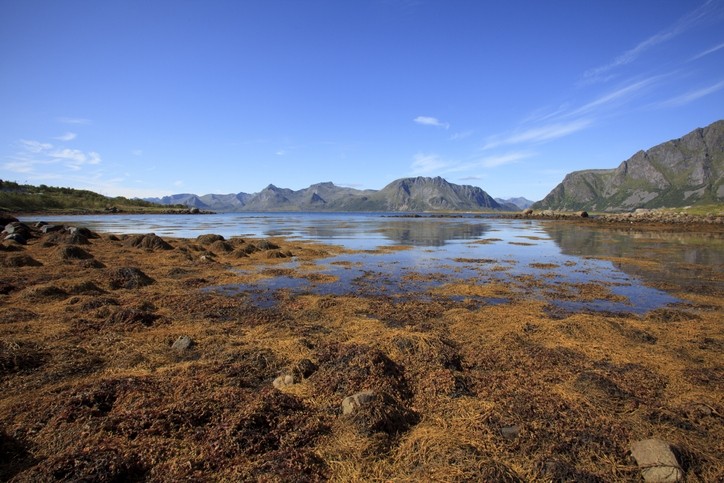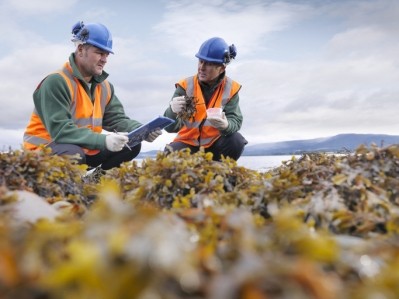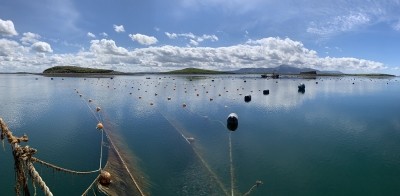Seaweed proves poor protein source for pigs and poultry in study undertaken in Norway

The team, comprising researchers from the Norwegian University of Life Sciences and from the independent research institute, SINTEF, evaluated two seaweeds, Saccharina latissima and Palmaria palmata, both of which are grown in Norwegian waters.
Their study, which was published recently in the journal Animal Feed Science and Technology, was conducted as part of the PROMAC project, and funded by the Research Council of Norway.
Background
There is growing interest and support for the cultivation of seaweed for a wide range of potential product applications in Norway, commented the researchers.
Among the seaweeds growing in Nordic waters, Saccharina latissima and Palmaria palmata are of interest as two quite different species, brown and red, respectively, with very different chemical composition, they said.
Brown seaweed typically has a high alginate content. They also contain cellulose, laminaran, mannitol and fucoidan (Holdt and Kraan, 2011). In contrast, the main carbohydrates of red algae are xylans (Holdt and Kraan, 2011).
The protein content of brown algae is generally lower than in red, 30–140 g/kg of dry matter in Saccharina latissima, and 80–350 g/kg in Palmaria palmata they said.
Additionally, the two seaweeds differ in their mineral content.
Of importance is the very high content of iodine in brown algae (Roleda et al., 2018), which, at sustained high intakes, may induce goitre in predisposed individuals (Holdt and Kraan, 2011), and possibly other health challenges (Shoyinka et al., 2008), noted the Norwegian experts.
The trials
The team outlined how the main goals of their research effort were the evaluation of the protein quality of the products and seeing if there possible effects on the health and function of the intestine and other organs from the use of the seaweeds.
Mink, a known model for comparison of nutrient digestibility in monogastric animals, was used. “This model is well established, not at least for the study of nutritional aspects of novel feeds and ingredients, but also to produce accurate results with a limited number of animals (Ahlstrøm and Skrede, 1998; Skrede et al., 1998) under conditions, as in the present, when availability of the experimental feed ingredients is limited,” remarked the scientists.
Two products from each of the seaweeds, a dried whole biomass and a protein concentrate, were evaluated.
The whole products were produced by drying of newly harvested material, whereas the protein enrichment was achieved by a water-extraction and carbohydrase treatment which reduced the content of salts and soluble carbohydrates, said the scientists.
Five diets were made; a reference diet based on fishmeal, and one for each of the four seaweed products. In the latter four, seaweed supplied 200 g/kg of crude protein.
Each diet was fed to four male mink for two weeks.
The findings
The team concluded that the biological value of the seaweed proteins was low.
"Only the protein concentrate from Palmaria palmata, could be considered a potential protein source for monogastric animals. It must, however, be used in combination with high-quality protein sources or fortified with amino acids to be useful as a protein source."
No clear beneficial or detrimental effects of the seaweed products were observed on gut health and function either, they found.
The team observed that products of Saccharina latissima and Palmaria palmata had low protein quality due to low apparent digestibility of most essential amino acids, in particular histidine and methionine.
The very low apparent digestibility of cysteine, which in an animal body may be produced from methionine, aggravates the methionine deficiency, they added.
The results, they said, also showed that diets with seaweed were less palatable than the fishmeal diet.
The animals fed the whole Saccharina diet had a significantly higher water intake and urine production than the other animals, with the team saying this was most likely due to the very high ash content of that seaweed product. “This diet also stood out regarding urine concentration of iodine, which was 300 times higher than for the fishmeal-based diet.”
Expression of genes associated with digestive and immune functions showed minor effects in the jejunum, somewhat more pronounced effects in the colon. The latter effects were related to immune functions and lipid metabolism, said the research team. No diet-related alterations in the histology of the jejunum and colon were observed.
The histological investigation of liver and kidney structure showed some alterations in the seaweed fed animals, they noted. Regarding microbiota assemblage in mucosa of jejunum and colon, no clear diet effects were observed either in richness or diversity.
The results regarding kidney structure and function, as well as the high iodine in the urine, indicating that further investigations are required to secure that animal health is not challenged by use of these seaweed ingredients in animal diets, cautioned the scientists.
Source: Animal Feed Science and Technology
DOI: https://doi.org/10.1016/j.anifeedsci.2021.114902
Title: Protein value and health aspects of the seaweeds Saccharina latissima and Palmaria palmata evaluated with mink as model for monogastric animals
Authors: Krogdahl et al












